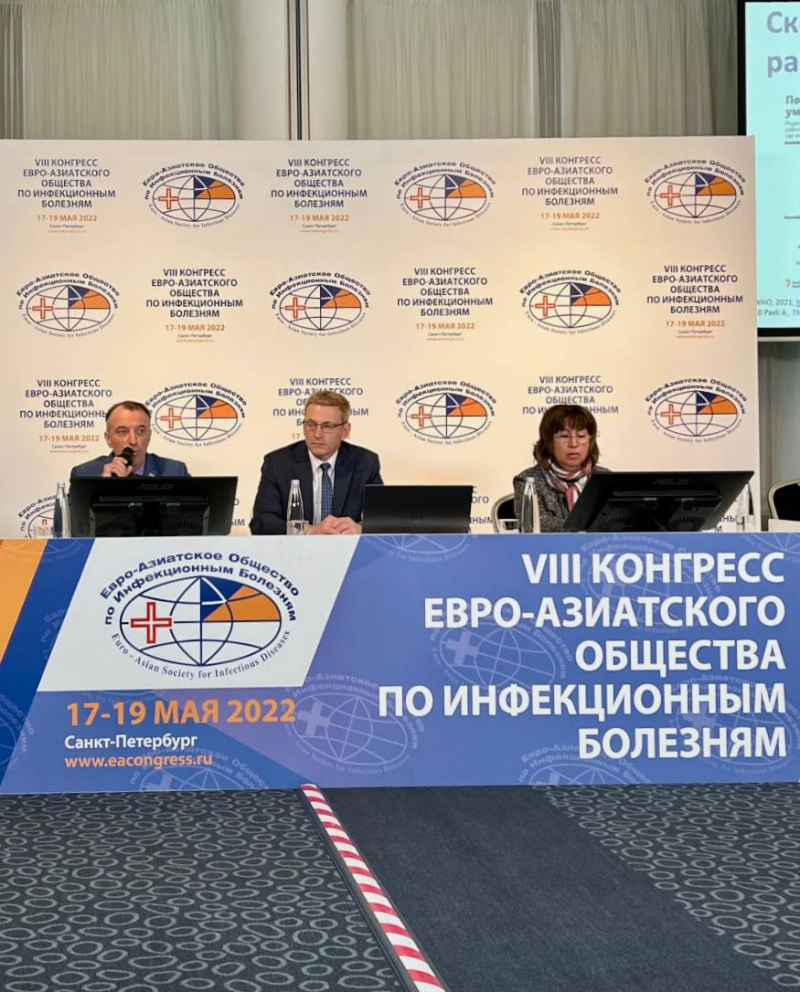
Health professionals discussed rehabilitation for patients recovered from COVID-19

Post-COVID symptoms, their frequency and severity may vary depending on the virus strain and illness period. Patients who received intensive treatment are a special group, they are under constant follow-up after discharge. The recovery measures were discussed at the 14th International Congress "Neurorehabilitation-2022".
Referring to WHO data, Oksana Drapkina, academician of the Russian Academy of Sciences, professor, doctor of medical science, chief external specialist in therapy and general medical practice of the Ministry of Health of Russian Federation, honored doctor of the Russian Federation, director of the FSBI “National Medical Research Center for Therapy and Preventive Medicine” of the Ministry of Health of Russian Federation, emphasized that post-COVID symptoms can evolve both in the direction of weakening and exacerbation. At the same time, symptoms clinical course is based on a chronic defect forming in the immune system, which can persist for many years and lead to diseases associated with autoimmune inflammation and disorders in the circulatory system.
Professor noted that after the outbreak of Coronavirus infection, up to 60% of patients report fatigue within a month after recovery. Patients with post-COVID syndrome most often face changes in the nervous system, lungs and heart. Changes in the nervous system most often include disorder of the sleep-wake cycle, insomnia, anxiety-depressive disorder, memory impairment, headache. In addition, the heart muscle is often affected too.
Galina Ivanova, chief external specialist in medical rehabilitation of the Ministry of Health of the Russian Federation, head of medical rehabilitation department of the faculty of additional professional education of Federal State Autonomous Educational Institution of Higher Education of the Pirogov University of the Ministry of Health of the Russian Federation, spoke about the rehabilitation routing scale being used today in Russia. It allows taking into account the degree of limitation of the patient's life activity and the conditions for providing a patient with rehabilitation assistance (outpatient, day hospital, round-the-clock medical supervision), as well as the medical rehabilitation stages.
Sergey Babak, professor of the phthisiology and pulmonology department, A.I. Evdokimov Moscow State University of Medicine and Dentistry, shared his findings on pulmonary deficiency that can be observed in those who have been ill even 6-7 months after the acute COVID phase. The ongoing inflammatory process in the lungs at this stage increases vascular permeability, leading to lung swelling, and may contribute to the formation of microthrombi. According to Sergey Babak, even fully recovered patients may experience gross fibrotic changes in the lung tissue. Key role in the development of inflammation, in swelling during the illness, and in subsequent fibrosis development is attributed to excessive accumulation of hyaluronic acid in the lungs. The patient in this clinical condition is in need of pharmaceutical support.
As a well-known example of a medicine with an antifibrotic effect, which helps against scars and adhesions, Sergey Babak cited Longidaza® (active ingredient - Bovhyaluronidase azoximer).
According to the results of the DISSSOLVE [1, 2] study, patients in the medicine group, showed a more pronounced improvement in general physical condition, a decrease in the dyspnea severity, increase in physical activity tolerance, level of capillary blood saturation at rest state, compared with the control group.
According to Galina Ignatova, professor and pulmonologist, the study showed that Bovhyaluronidase azoximer helps to enhance the effectiveness of post-COVID rehabilitation. At the same time, the most pronounced effect of the medicine was observed in severe patients.
Galina Ignatova added that the Longidaza mode of action is based on the ability to easily break down hyaluronic acid reducing its excess thus restoring lung ventilation.
Longidaza® has a high safety profile and is well tolerated by patients; today health professionals propose to include it in guidelines for prevention, diagnosis and treatment of Coronavirus infection.
1 https://clinicaltrials.gov/ct2/show/NCT04645368
2 https://dx.doi.org/10.18565/therapy.2021.10.138–146
Influenza and COVID mixed infection may become a new challenge for public healthcare system in the upcoming epidemiological season


